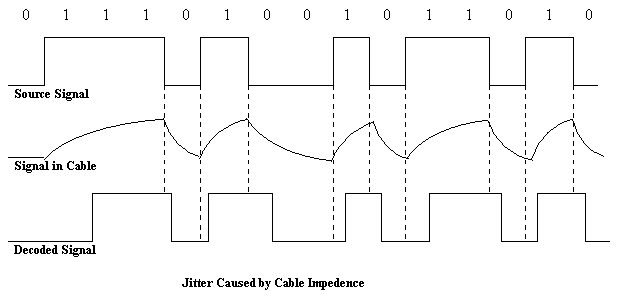J-card : The printed card inserted into a cassette tape box, so named because it resembles a "J" when viewed from its end.
jack : A female connector, frequently mounted on the chassis of an audio device, which serves as a receptacle for the male connector, called a plug, on the end of an audio cable.
jam sync : A family of techniques in which a synchronization device reads timecodetime code and regenerates new timecodetime code that may not have the same address as the original timecode. Usually, the transferring of a timecodetime code and user bits from an external reference source to a SMPTE timecodetime code generator, either once, called one-time jam sync, which will align two codes at one frame only, allowing each to proceed at its own internal rate froorm that moment forward, or continuously, which will force the generator to mimic the timecodecode numbers of the reference source continuously. TimecodeTime code is read up to the last good address, then the generator uses the next consecutive address to generate a new timecodetime code, called Jam TimecodeTime Code, or JTC. The process of regenerating SMPTE timecodetime code to a previous reference: the source timecodetime code goes to the timecodetime code synchronizer, which reads it and regenerates a new copy. If there is a dropout in the timecodetime code, the synchronizer will freewheel, continuing to create timecodetime code to cover the dropout. Used to recover from
dropouts or non-continuous timecodetime code caused by editing.
JBOD (Just a bunch of drives) : Can function the same as a RAID, but are not arranged in an array.
Jecklin Disc : Also called a Henry. A disc usually made of plywood, typically 10"-12" in diameter. There is a mounting for the microphone on one edge, and the disc is covered in an absorbent material. The concept is that the microphone spacing matches that of human ears and the disc provides the sound-shadowing effects of the head, so the ensemble should be able to capture sounds in the microphones which will most closely match what a person would hear, effectively transporting the listener to the recording venue. Results are variable. See also ambisonic.
jitter : (1) The lack of precision in digital sampling times, leading to amplitude errors in signals with rapidly changing amplitudes, resulting in distortion of the sampled signal which rises with frequency. The starting time of the sampling aperture is the non-zero time that it takes for the sample-and-hold circuitry to determine the level of the signal waveform and to hold this level until the next sample is called for. Because the time required to establish a new value of charge depends on the amount of change in the signal level from one sample to the next, the aperture time will vary with the rate of change in the signal level, increasing for high-level, high-frequency signals. The starting time of the sampling aperture is also slightly uncertain, and this is called jitter. Also called sampling offset uncertainty. See aperture time errors.
(2) Timing errors introduced into channel-coded interfaces such as AES/EBU and S/PDIF where the word clock is embedded within the data stream. Cable capacitance reduces HF signal, resulting in founded corners and sloping edges, as opposed to a sharply divided on/off pulse wave. As the word clock timing is defined by the midpoint of the pulse wave, any strictly nonvertical slope creates timing uncertainty and, therefore, jitter.
Johnson noise : See noise floor. Johnson noise is the broadband white noise power associated with electrical resistance at temperatures above absolute zero. The Johnson noise level is the limiting minimum noise any circuit can attain. Also called thermal noise.
joint : In tape editing, the point of connection between two pieces of tape spliced together.
Joule’s Law : A formula for converting watts into amperes:
P= VxI, or alternately, I= P/V.
JPEG : Joint Picture Expert Group. A body that defined a standard for data compression originally for still images. This has been extended to M-JPEG for use in random- access ( non-linear) editing or systems. Lossy, but generally acceptable. See MPEG. JTC
JTC : See jam sync.
just intonation : A family of tuning systems that can have fewer than twelve12 tones per octave or many more than twelve12. Just intonation is based on any pure, natural scale determined by the frequencies of the harmonic series of the tonic, not one that is artificially fixed by keyboard instruments. Purely tuned just intervals are almost never used in music because of their incompatibility with the octave. Scales in just intonation are never equal tempered, and vice-versa. See syntonic comma, diatonic comma, and temperament.
just noticeable difference : A psychoacoustic term which refers to the smallest timing difference the human aural system is capable of detecting between two sound sources, approximately 6µs. This is just an artifact of human hearing and is not related to the Haas effect.
j

